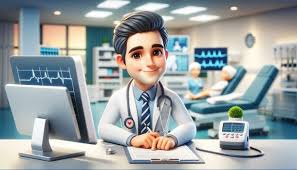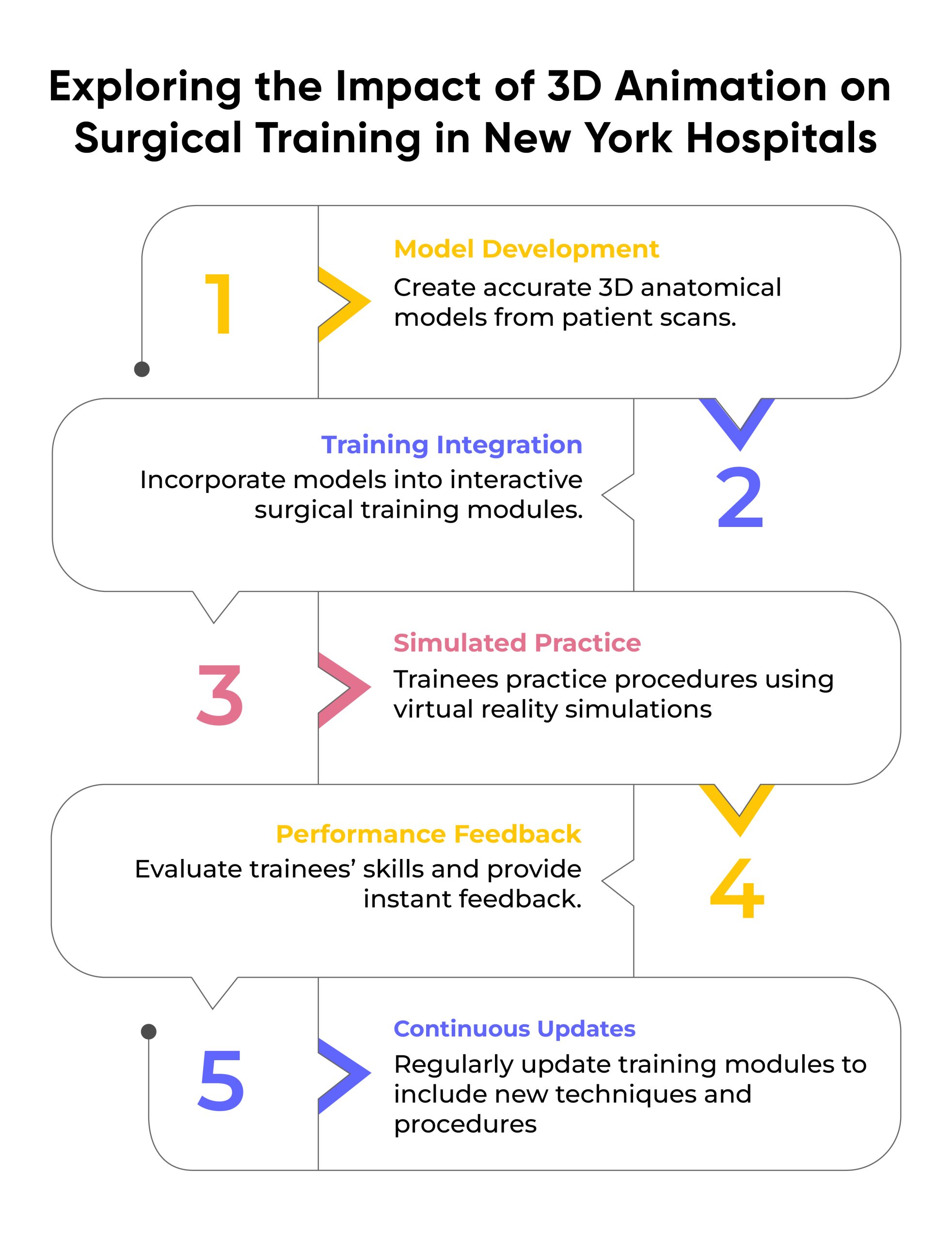Guide to Healthcare Video Animation Services in New York

The healthcare sector is changing quickly, and with it are the manner in which we explain difficult medical ideas. Leading this change in the busy city of New York are healthcare animation services, which provide audiences with engaging, educational, and informative solutions. Explore how healthcare video animation services in New York are influencing healthcare communication in the future.
Why Video Animation?
Video animation has become an important tool in healthcare for several reasons:
- Visual Learning: Complex medical information is more digestible when presented visually. Animations can break down difficult subjects into understandable segments.
- Engagement: Animated videos are more likely to capture and retain the viewer’s attention compared to text-based content.
- Accessibility: Videos can be shared widely, making them an effective tool for reaching diverse audiences.
Healthcare Video Animation Services in New York: What’s on Offer?
Innovating and creative, New York is home to several companies that specialize in healthcare video animation. These services cater to a wide range of needs:
Educational Content for Patients
- Procedure Explanations: Simplifying the steps of medical procedures to reduce patient anxiety.
- Disease Awareness: Spreading knowledge about symptoms, treatments, and prevention of diseases.
Training for Healthcare Professionals
- Surgical Training: 3D animation to demonstrate surgical techniques safely and effectively.
- Continuing Medical Education: Modules on new research findings or medication instructions.

Marketing for Healthcare Facilities
- Promotional Videos: Highlighting facilities, services, and specialties.
- Patient Testimonials: Animated re-enactments of patient experiences to build trust and credibility.
The Making of a Top Medical Animations Service
Creating effective healthcare animations involves several key steps, and partnering with the best medical animation company can enhance each step of the process:
- Scriptwriting: Crafting a concise and clear narrative that conveys the medical information.
- Storyboarding: Planning the visual flow of the animation.
- Animation: Using advanced software to bring the storyboard to life with engaging visuals.
- Voiceover: Adding professional audio to enhance the understanding of the content.
- Final Edits: Ensuring the animation meets all quality standards and medical accuracies.
Technological Advances in Animation
Animation is a constantly changing industry where technological developments by medical animation companies improve the effectiveness, quality, and usefulness of animated material—particularly in the healthcare industry. Leading these developments and combining advanced technologies and methods that are raising the bar for healthcare communication is New York, a center of technology innovation.
Virtual Reality (VR)
Virtual reality has transformed from a futuristic concept into a practical tool in healthcare animation. By creating immersive 3D environments, VR allows medical professionals and students to experience complex surgical procedures and anatomical explorations as if they were performing them firsthand. This hands-on approach facilitates a deeper understanding and retention of procedural knowledge, crucial for high-stakes medical practices.
Augmented Reality (AR)
Augmented Reality blends digital elements with the real world, enhancing the way medical professionals and patients interact with information. In educational contexts, AR can project 3D animations of organs or surgical procedures onto a physical space, providing a more interactive and engaging learning experience. For patients, AR animations can demystify surgical procedures or treatment plans by overlaying them onto the patient’s understanding of their own body, thus reducing anxiety and improving patient compliance.
Artificial Intelligence (AI)
AI is reshaping animation production processes by automating tasks that traditionally require significant time and resources, such as syncing voiceovers with animated sequences or adjusting animations based on real-time data input. AI-driven tools can analyze vast amounts of medical data to suggest the most effective ways to represent complex health conditions, ensuring animations are not only accurate but also optimized for learning and retention.
High-Resolution 3D Scanning
Animators can now produce more precise and detailed representations of human anatomy because of developments in 3D scanning technology. Higher degrees of realism and medical correctness are made possible by the exact foundation these scans provide animators to create their animations from. Surgical training animations, where precision and detail are critical, benefit most from this.
Cloud-Based Collaboration Tools
The rise of cloud computing has revolutionized how animation teams collaborate, especially in a city as interconnected as New York. Cloud-based platforms enable seamless collaboration across different teams and experts, regardless of their physical location. These tools facilitate real-time updates, feedback, and iterations, speeding up the animation process while ensuring all stakeholders can contribute expertise and oversight.
Table: Comparing Types of Animations Used in Healthcare
| Type of Animation | Best Uses | Advantages |
| 2D Animation | Patient education, Ads | Cost-effective, quick to produce |
| 3D Animation | Surgical training, Complex ideas | Highly detailed, visually appealing |
| Motion Graphics | Statistical data, Quick ads | Dynamic, engaging |
In New York’s competitive market, the top medical animations service combines expertise in healthcare knowledge with advanced animation techniques, ensuring that each video not only looks professional but also adheres strictly to medical accuracy.
The Creative Process Behind Healthcare Animation
Producing a healthcare animation is a complex procedure that calls for in-depth knowledge of digital design and medicine. Here’s what the journey typically involves:
- Initial Consultation: Understanding the client’s needs and the message they wish to convey.
- Medical and Scientific Research: Ensuring all information is accurate and up-to-date.
- Creative Development: Designing characters, environments, and animations that are both appealing and appropriate for the target audience.
- Feedback and Revisions: Incorporating client and regulatory feedback to refine the animation.
This blend of creativity and scientific rigor is what sets apart a top healthcare animation company in the competitive market of New York.
Conclusion
Healthcare video animation services in New York are completely changing how patients and medical professionals engage with intricate health information. These services are boosting patient care and involvement in addition to teaching and training by using the potential of visual storytelling. Healthcare animation’s potential and influence will grow along with technology.
FAQs
Q 1: What is healthcare video animation?
Healthcare video animation is a digital technique used to create moving visual representations of medical and health-related information. This can include animations of procedures, explanations of diseases, or illustrations of complex biological processes.
Q 2: Why use video animation in healthcare?
Video animations can make complex medical information more accessible and understandable to a wide audience, improving learning and retention rates.
Q 3: How long does it take to produce a healthcare animation?
The production time can vary depending on the complexity of the project but typically ranges from a few weeks to a couple of months.
Q 4: How much does healthcare video animation cost in New York?
Costs can vary widely based on the length of the video, complexity of animations, and the expertise of the animation team. Projects can range from a few thousand dollars to tens of thousands.
Q 5: How do I choose the right healthcare animation service in New York?
Look for a service that has a proven track record in healthcare, understands medical compliance, and can demonstrate a portfolio of high-quality animations that effectively communicate their intended messages.
Q 6: How can healthcare video animation services improve patient education?
Healthcare video animation services simplify medical information, making it visually engaging and easier to understand, which enhances patient education and reduces anxiety.










